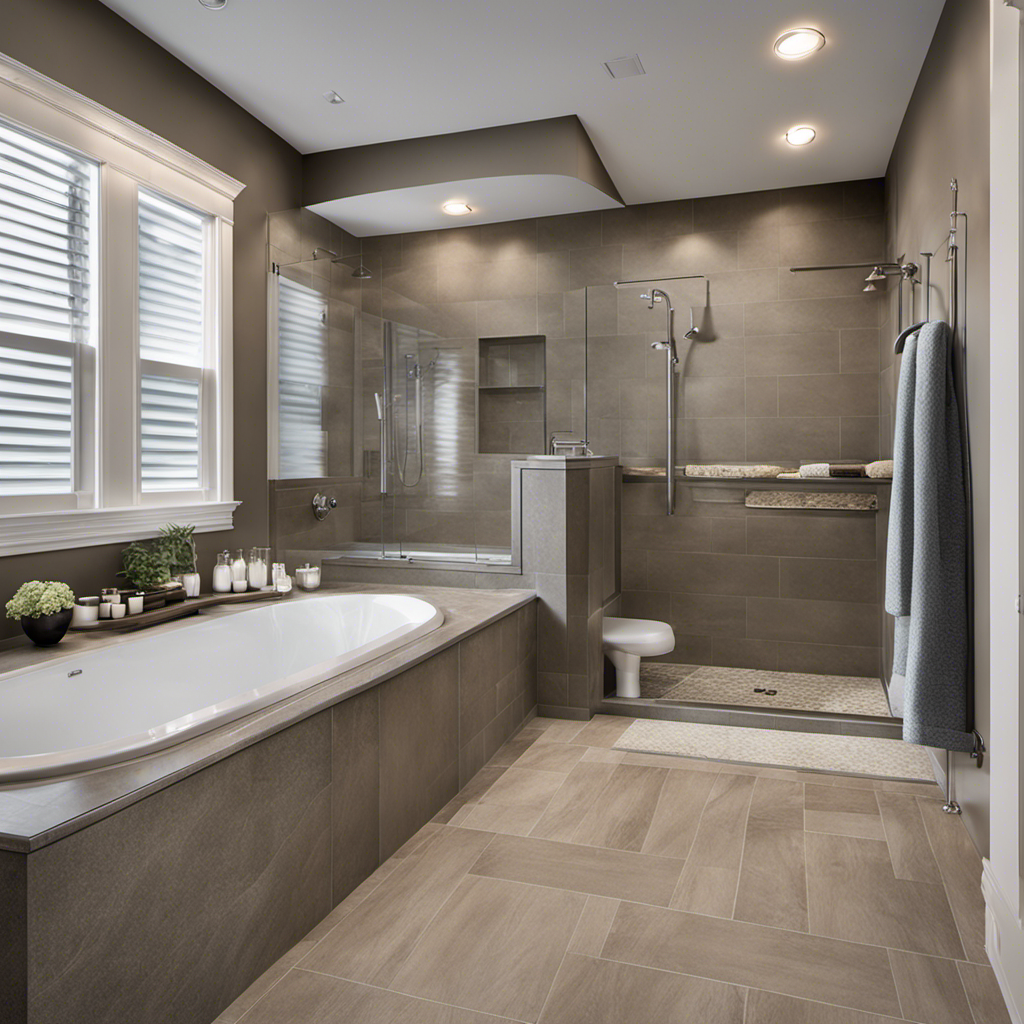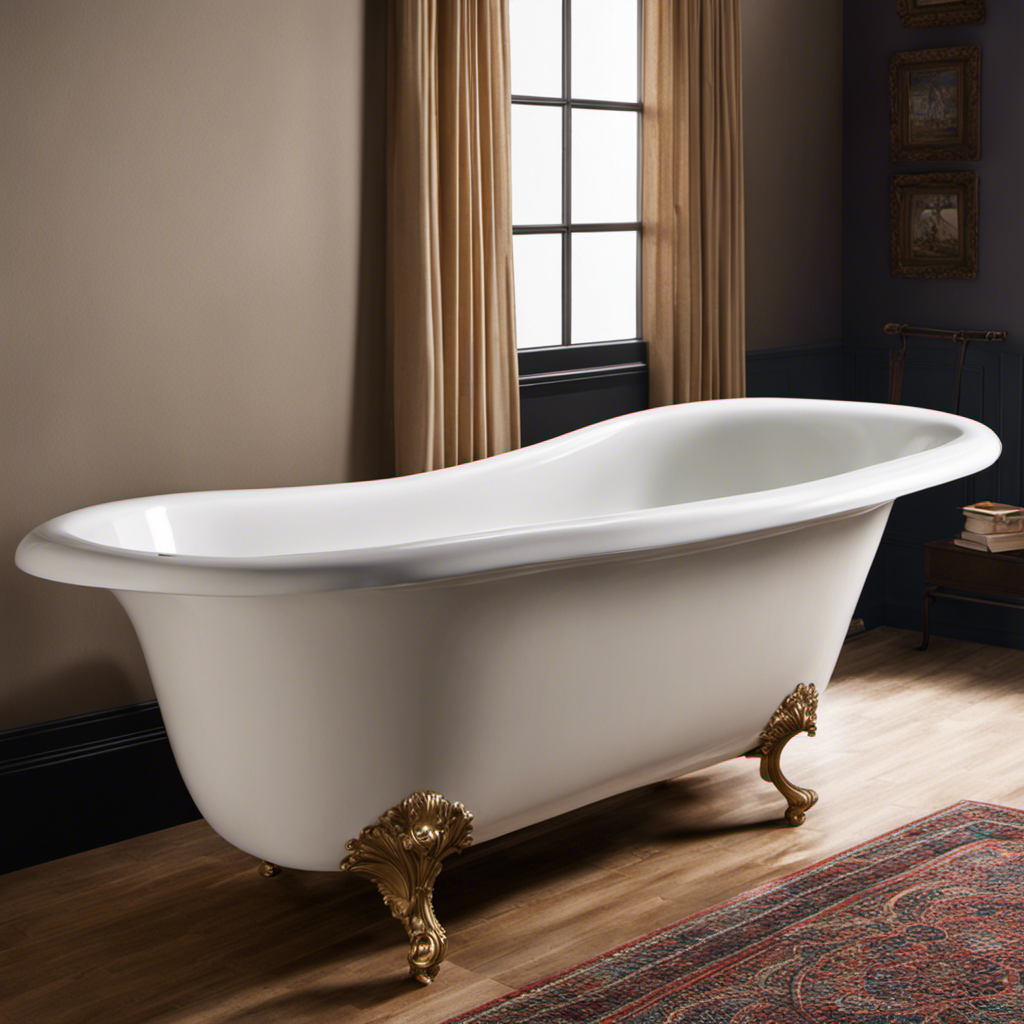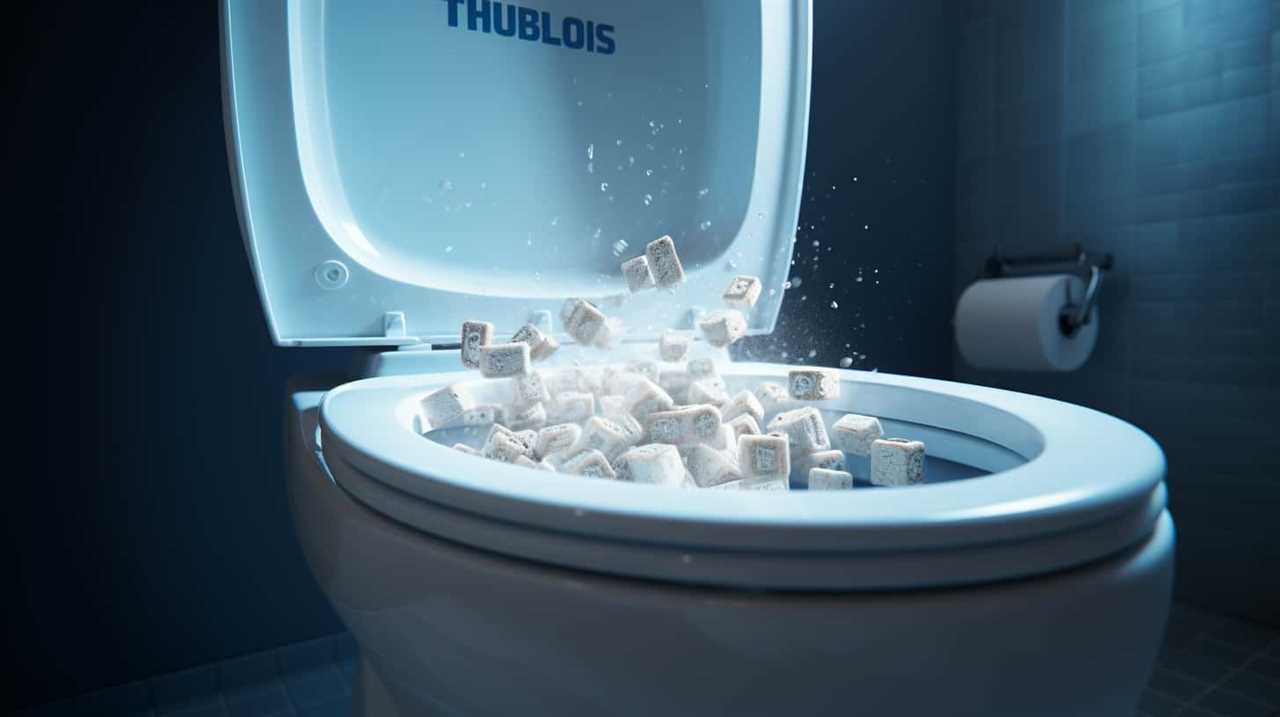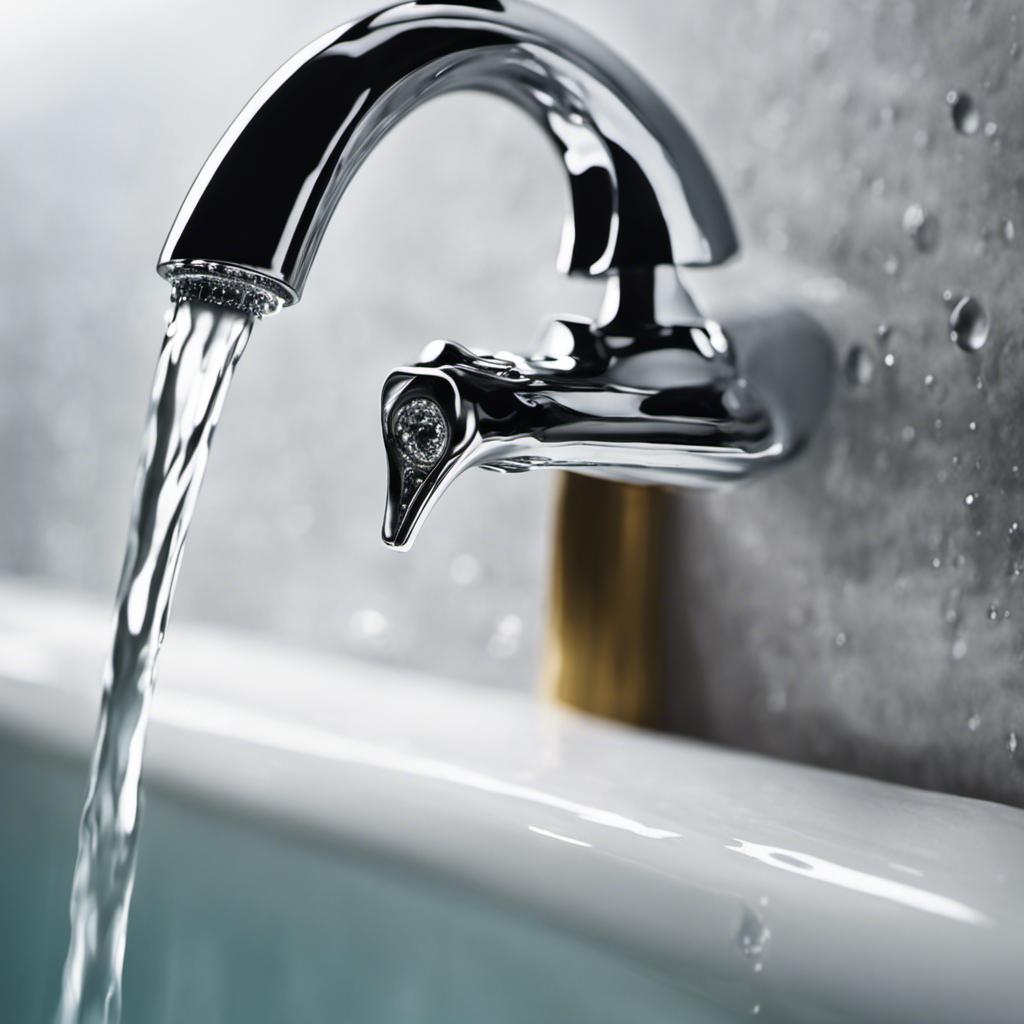Imagine stepping into a bathtub and feeling confident in your ability to safely navigate its slippery surface.
In this article, we will guide you through the process of making your bathtub handicap accessible.
From assessing your accessibility needs to installing grab bars and converting to a walk-in tub, we will provide you with the knowledge and information you need to ensure safety and comfort.
With our detailed instructions, you can transform your bathtub into a space that promotes independence and peace of mind.
Key Takeaways
- Evaluate mobility limitations and assistance requirements
- Install grab bars at appropriate height and strategically place them for support
- Consider converting to a walk-in tub with safety features
- Use a sturdy and adjustable transfer bench for easy and safe entry into the tub
Assessing Accessibility Needs
You’ll need to assess your specific accessibility needs before making your bathtub handicap accessible. Evaluating your requirements is crucial to ensure that the modifications made to your bathroom layout are suitable for your needs.
Start by considering your mobility limitations and determining how much assistance you require. Think about whether you need a wheelchair-accessible bathtub or a walk-in bathtub with grab bars and handrails. Assess the height and width of the bathtub, and ensure that it is convenient for you to enter and exit safely.
Additionally, evaluate the flooring in your bathroom to make sure it is slip-resistant and provides stability.
Installing Grab Bars
Installing grab bars can greatly enhance the safety and accessibility of a bathtub for individuals with limited mobility. When installing grab rails, it is important to choose the appropriate placement to ensure maximum support and stability.
The first thing to consider is the height of the grab bars. Generally, they should be installed at a height of 33-36 inches above the floor. This allows for easy gripping and leverage when getting in and out of the bathtub.
Additionally, the grab bars should be securely mounted to the wall, using anchors or screws that are designed to hold the weight of a person. It is recommended to install at least two grab bars – one vertical bar near the entrance of the tub and one horizontal bar along the side wall. These bars should be placed strategically to provide support during various movements, such as standing up or sitting down.
By installing grab bars in the right locations, you can significantly improve the safety and accessibility of your bathtub for individuals with limited mobility.
Now, let’s explore another option to make your bathtub more accessible – converting to a walk-in tub.
Converting to a Walk-in Tub
Converting to a walk-in tub can greatly improve the safety and convenience of using the bathtub for individuals with limited mobility. Here are three reasons why choosing the right walk-in tub can be beneficial for seniors:
-
Accessibility: Walk-in tubs have a low threshold, making it easy for seniors to step in and out of the tub without the risk of tripping or falling. They also come with grab bars and handrails for added stability and support.
-
Safety Features: Walk-in tubs are equipped with various safety features such as non-slip flooring, built-in seating, and handheld showerheads. These features ensure that seniors can bathe comfortably and independently, reducing the risk of accidents.
-
Hydrotherapy Benefits: Many walk-in tubs offer hydrotherapy options, including water and air jets. These therapeutic features can help relieve muscle pain, improve circulation, and provide a soothing experience for seniors.
Adding a Transfer Bench
To enhance the safety and convenience of your walk-in tub, consider adding a transfer bench for easier entry and exit. Choosing the right transfer bench is crucial to ensure that it meets your specific needs.
Look for a bench that is sturdy, adjustable, and has a non-slip surface. It should also have a weight capacity that can accommodate your body weight. When using the transfer bench, make sure it is properly secured to prevent any accidents.
Sit on the bench and swing your legs over the tub, using the bench as support. Take your time and be cautious when transferring onto the bench and into the tub.
After each use, clean the bench with a mild detergent and warm water to maintain its cleanliness and prevent any buildup of bacteria. Regularly check for any signs of wear and tear and replace the bench if necessary.
Following these guidelines will ensure the proper use and maintenance of your transfer bench, allowing you to enjoy a safer and more convenient bathing experience.
Ensuring Safety and Comfort
To ensure your safety and comfort while using the transfer bench, remember to always check for any signs of wear and tear and replace it if necessary.
Here are some important tips for maintaining your transfer bench:
-
Check the legs: Make sure the legs are sturdy and secure. Look for any cracks or loose screws that may compromise the stability of the bench.
-
Inspect the seat: Check the seat for any signs of wear, such as tears or fraying. A worn-out seat can be uncomfortable and may cause slipping.
-
Test the non-slip features: Ensure that the non-slip surface on the bench is intact and effective. This will prevent accidents and provide stability while transferring in and out of the bathtub.
By regularly inspecting and maintaining your transfer bench, you can ensure a safe and comfortable bathing experience.
Frequently Asked Questions
What Are the Benefits of Installing Grab Bars in a Bathtub for Handicap Accessibility?
Installing grab bars in a bathtub for handicap accessibility has many benefits. They provide stability, support, and safety for individuals with mobility issues. To install them, locate the ideal height and securely attach them to the bathtub walls.
Can a Regular Bathtub Be Converted Into a Walk-In Tub, or Is It Necessary to Purchase a Specific Walk-In Tub Model?
You don’t need a fancy walk-in tub model to convert your regular bathtub into a walk-in tub. There are plenty of options available for converting bathtubs into walk-in tubs.
How Do I Choose the Right Transfer Bench for My Bathtub?
To choose the right transfer bench for your bathtub, consider safety features like non-slip surfaces and sturdy construction. Look for adjustable height and width options to ensure a comfortable fit.
What Are Some Additional Safety Measures I Can Take to Ensure a Handicap Accessible Bathtub Is Safe for Use?
To ensure a safe and handicap-accessible bathtub, consider installing additional support bars and a non-slip flooring. For example, adding grab bars and a textured mat can provide extra stability and prevent accidents.
Are There Any Specific Features or Accessories That Can Enhance Comfort in a Handicap Accessible Bathtub?
To enhance comfort in a handicap accessible bathtub, there are specific features and accessories available. These include adjustable water temperature, grab bars for stability, and padded seats for added comfort during bathing.
Conclusion
In conclusion, making a bathtub handicap accessible requires careful assessment of accessibility needs. This includes considering the specific challenges faced by individuals with mobility issues and determining the modifications necessary to address those challenges.
One important modification is the installation of grab bars. These bars provide stability and support for individuals as they enter and exit the bathtub. They can be strategically placed in areas where assistance is needed the most, such as near the tub entrance or along the walls of the bathtub.
Another modification is the conversion to a walk-in tub. Walk-in tubs have a door that allows individuals to step into the tub without having to lift their legs over the side. This eliminates the need for climbing in and out of the tub, reducing the risk of falls and injuries.
Additionally, the addition of a transfer bench can greatly enhance accessibility. A transfer bench is a seat that extends from outside the tub to inside, allowing individuals to sit down and then slide into the tub. This eliminates the need for stepping into the tub, making it easier for individuals with mobility challenges to bathe safely.
Lastly, ensuring safety and comfort is essential. This can be achieved by adding non-slip mats or strips to the bottom of the tub, adjusting water temperature controls to prevent scalding, and providing adequate lighting in the bathroom. These measures help create a more secure and pleasant bathing experience for individuals with mobility challenges.
Remember, ‘Rome wasn’t built in a day’ – the process of making a bathtub handicap accessible may take time and effort, but it is well worth it to provide a safer and more comfortable bathing experience for those with mobility challenges. By following these steps, you can create a bathroom that meets the needs of everyone in your household.










